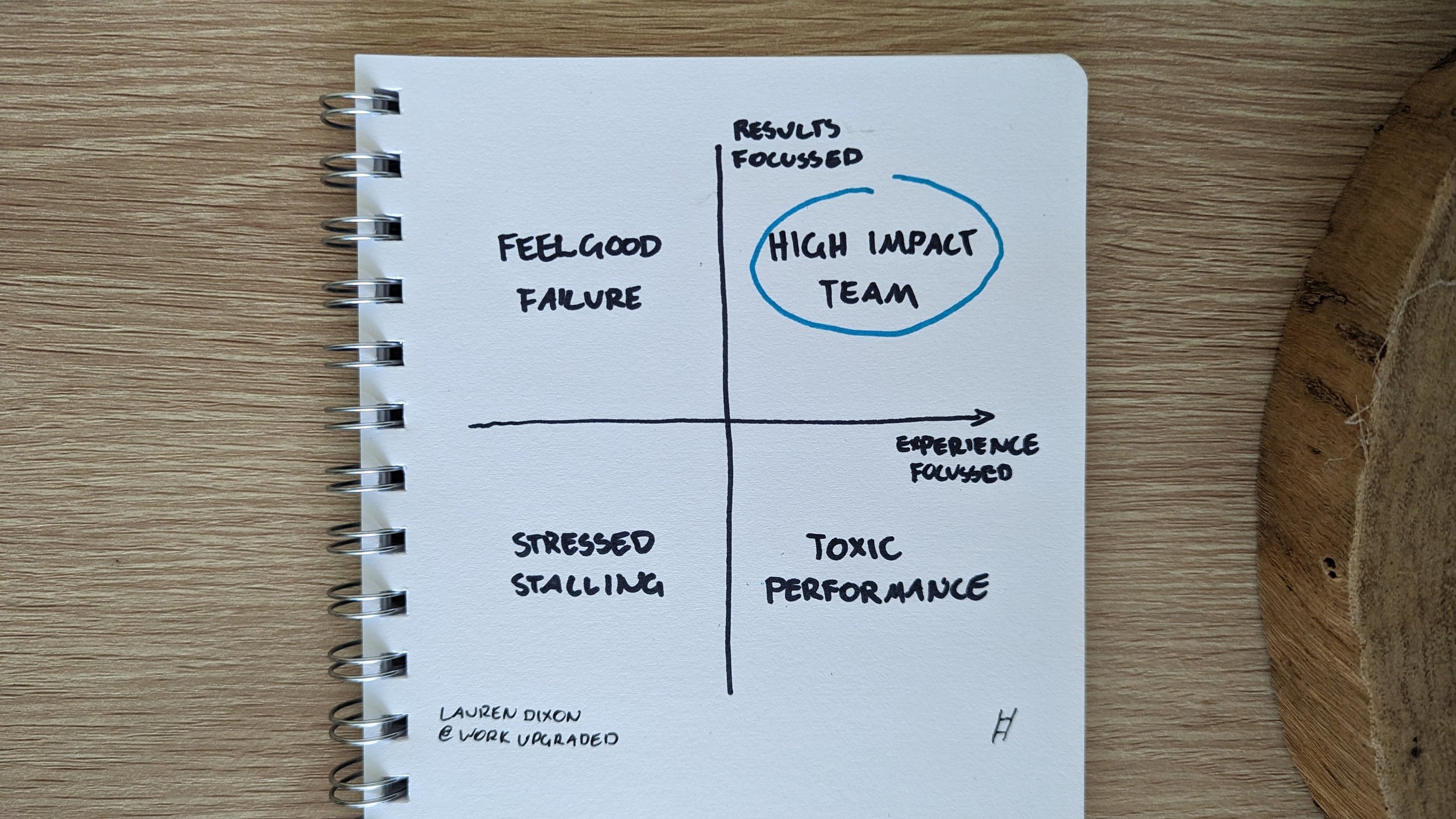6 steps to transform your people into a high impact team
High impact is created by combining focus on results with focus on experience
Leading a high impact team means balancing the needs of the business (results focus) with the needs of the team (experience focus). Too much of either causes problems.
If all we do is focus on our people's needs, we may find we never hit our targets. Although people may be happy in the short term, pretty soon the team won't exist because they're not delivering business value.
If all we do is focus on the business needs, it's too easy for toxic behaviours to creep in. Although we may get big results, pretty soon the team won't exist because the team members can't sustain the results in such a toxic environment.
If we don't focus on either, obviously we end up very stressed with little to show for it.
Balancing business needs with people's needs -- or better yet linking the two together so the success of your people rises on the success of your business -- results in a high impact team.
And a high impact team isn't just a set of feel good words.
High impact teams are the sort that build careers off the back of successful projects that deliver accolades, pay rises, promotions, opportunities to pick and choose projects, and being head hunted to lead new high impact teams.
So how do we do that?
Results focus: delivering what the business needs
Across organisations from scrappy one-person start ups through to multi-national corporates, three actions enable teams to succeed against their business metrics:
They understand their main measure of success.
They boldly decide and communicate where they will invest time and resources.
They get transparency about what activities are being done and how these activities impact their main measure of success.
Not convinced? Here are some common pain points when running teams and how they connect to these three actions:
Experience focus: delivering what the people need
Now we know the three main actions to improve focus on the business' needs. But how do we keep sight of what the team needs so that we avoid falling into toxic performance. Again, we have three actions:
They understand teams and employees don't need the exact same goals to help each other thrive.
They adapt the execution plan to the team's specific strengths.
They invest in team members to incentivise team members to invest in the team.
Here are the common pain points of teams that don't use these three actions to address the team's needs:
Where to start
Each of these actions could be the dictionary definition of “easier said than done.”
Complicated forces intertwine with our clear goals, our investment decisions, and our action plans. People are complex making it hard to identify what symbiotic success and strengths even look like to enable the right kind of investment in employees.
The place to start though is getting really clear on what success looks like. Just by defining what your “one main measure” is, everything else will start to come into focus.
If you’d be interested in my process for identifying a team’s one main measure, let me know and I might share in a future post!
Access the full detail and application for the High Impact Teams framework in the Work Upgraded toolkit.



